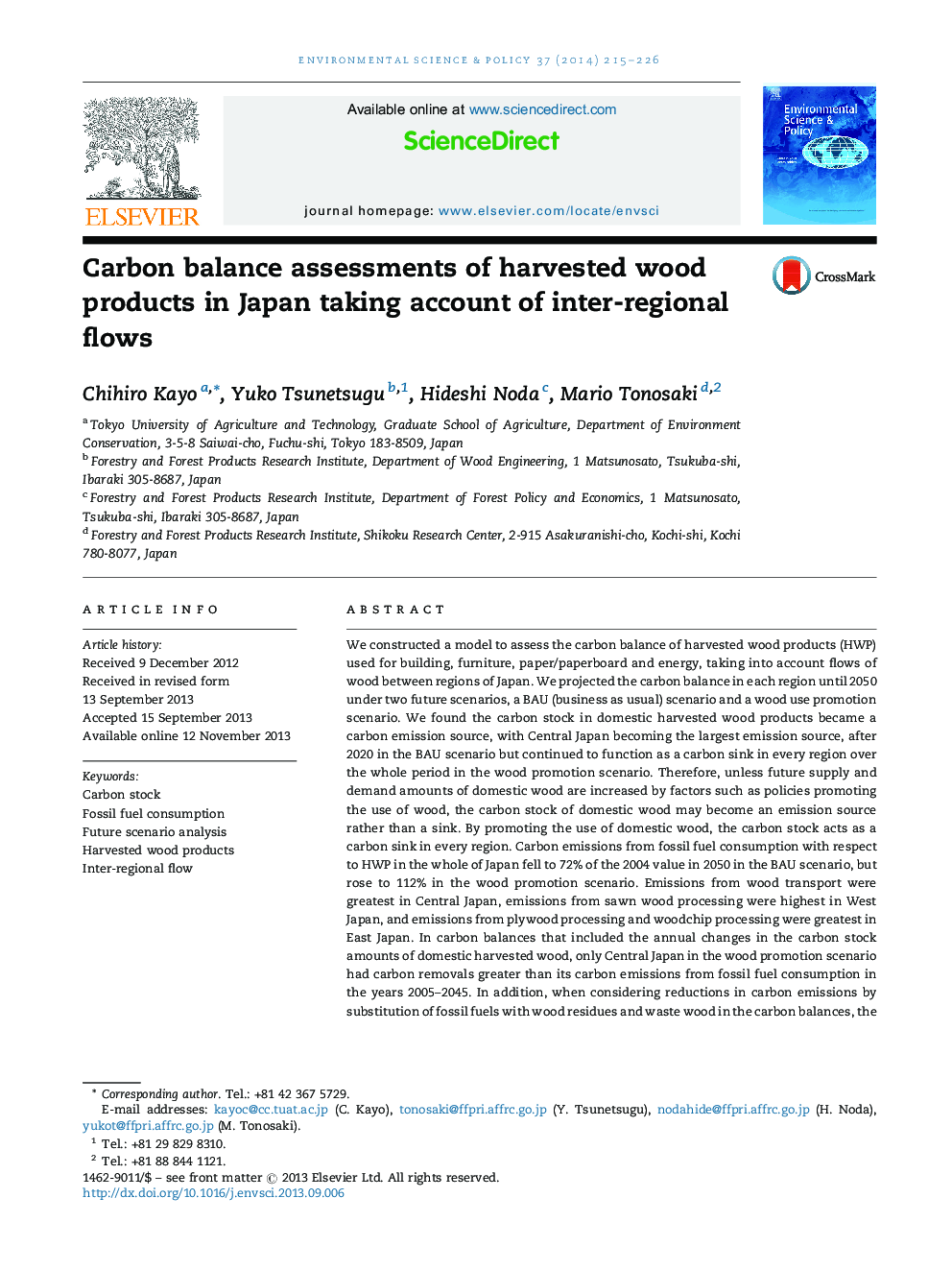| کد مقاله | کد نشریه | سال انتشار | مقاله انگلیسی | نسخه تمام متن |
|---|---|---|---|---|
| 7468042 | 1485069 | 2014 | 12 صفحه PDF | دانلود رایگان |
عنوان انگلیسی مقاله ISI
Carbon balance assessments of harvested wood products in Japan taking account of inter-regional flows
ترجمه فارسی عنوان
ارزیابی تعادل کربن محصولات چوب در ژاپن با توجه به جریانهای بین منطقه ای
دانلود مقاله + سفارش ترجمه
دانلود مقاله ISI انگلیسی
رایگان برای ایرانیان
کلمات کلیدی
ذخایر کربن، مصرف سوخت فسیلی، تجزیه و تحلیل سناریو آینده، محصولات چوب برداشت شده، جریان بین منطقه ای،
موضوعات مرتبط
مهندسی و علوم پایه
مهندسی انرژی
انرژی های تجدید پذیر، توسعه پایدار و محیط زیست
چکیده انگلیسی
We constructed a model to assess the carbon balance of harvested wood products (HWP) used for building, furniture, paper/paperboard and energy, taking into account flows of wood between regions of Japan. We projected the carbon balance in each region until 2050 under two future scenarios, a BAU (business as usual) scenario and a wood use promotion scenario. We found the carbon stock in domestic harvested wood products became a carbon emission source, with Central Japan becoming the largest emission source, after 2020 in the BAU scenario but continued to function as a carbon sink in every region over the whole period in the wood promotion scenario. Therefore, unless future supply and demand amounts of domestic wood are increased by factors such as policies promoting the use of wood, the carbon stock of domestic wood may become an emission source rather than a sink. By promoting the use of domestic wood, the carbon stock acts as a carbon sink in every region. Carbon emissions from fossil fuel consumption with respect to HWP in the whole of Japan fell to 72% of the 2004 value in 2050 in the BAU scenario, but rose to 112% in the wood promotion scenario. Emissions from wood transport were greatest in Central Japan, emissions from sawn wood processing were highest in West Japan, and emissions from plywood processing and woodchip processing were greatest in East Japan. In carbon balances that included the annual changes in the carbon stock amounts of domestic harvested wood, only Central Japan in the wood promotion scenario had carbon removals greater than its carbon emissions from fossil fuel consumption in the years 2005-2045. In addition, when considering reductions in carbon emissions by substitution of fossil fuels with wood residues and waste wood in the carbon balances, the sum of the removals from carbon stock changes and the reductions of carbon emissions were greater than the carbon emissions associated with HWP over the entire period in all three regions in both scenarios.
ناشر
Database: Elsevier - ScienceDirect (ساینس دایرکت)
Journal: Environmental Science & Policy - Volume 37, March 2014, Pages 215-226
Journal: Environmental Science & Policy - Volume 37, March 2014, Pages 215-226
نویسندگان
Chihiro Kayo, Yuko Tsunetsugu, Hideshi Noda, Mario Tonosaki,
